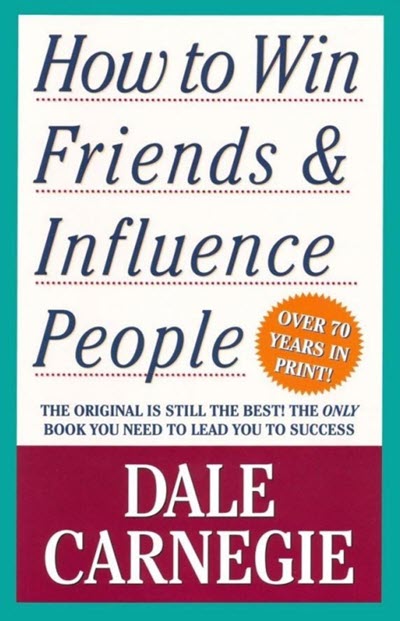
FREE eBook – How to Hypnotize Yourself with Your Eyes Wide Open!
The book Instant Self-Hypnosis by Forbes Robbins Blair offers a set of surprising and practical insights that reframe hypnosis as a straightforward tool for personal change.
5 Surprising Truths About Self-Hypnosis That Could Change How You Think About Change
Introduction: The Willpower Trap
For most people, the path to personal change is a frustrating cycle of failed willpower and fading intentions. You decide to make a change—to break a bad habit, start a good one, or simply think more positively. Yet, a few days or weeks later, you find yourself right back where you started. It’s a common cycle that often leaves you feeling like real, lasting change is just out of reach.
When willpower fails, some people consider hypnosis, a tool often shrouded in mystery and misconception. Stage shows and cartoons have painted a picture of mind control and swinging pocket watches, making the practice seem either silly or scary. But what if the reality of hypnosis was something far more practical, accessible, and powerful?
The book Instant Self-Hypnosis by Forbes Robbins Blair offers a set of surprising and practical insights that reframe hypnosis as a straightforward tool for personal change. This article distills the five most impactful takeaways from the book that could completely change how you think about change.
1. You Can Hypnotize Yourself Just By Reading—With Your Eyes Wide Open
The book’s central, counter-intuitive premise is a method of self-hypnosis that works by simply reading a script aloud with your eyes wide open. This “Instant Self-Hypnosis” technique is designed to create a state of heightened suggestibility without the need to close your eyes, memorize scripts, or practice complex skills.
This insight is revolutionary because it transforms self-hypnosis from a specialized skill you must learn into a simple process you can execute on your first try, making the barrier to entry virtually nonexistent. There are no complicated steps to remember. The process is immediate and self-contained within the act of reading itself, making it one of the most accessible forms of self-improvement available.
You benefit fully from this book without ever putting it aside. It’s designed to change you as you read it!
2. Your Mind Has a “Doorman”—and Hypnosis is the Easiest Way Past Him
The book uses a brilliant “nightclub doorman” analogy to explain the mind’s built-in security system—the conscious mind’s critical filter. This mental doorman stands at the entrance to your subconscious, vetting new ideas for change. It compares them against your existing beliefs and programming, and if a new idea doesn’t “fit in,” it gets rejected.
Trying to use willpower is like trying to fight the doorman—a difficult and often losing battle. Using affirmations is like nagging him for hours, hoping he’ll eventually give in. Hypnosis, on the other hand, is the clever way to bypass him entirely. It works by calming and distracting this mental gatekeeper, allowing positive suggestions to be accepted directly by the subconscious mind where they can directly influence your automatic behaviors and beliefs.
…hypnosis does. It calms, quiets, and distracts the doorman of your mind so that you can get inside, make some changes, then leave again.
3. Forget the Cartoons: In Real Hypnosis, You’re Awake and In Full Control
One of the biggest hurdles for people considering hypnosis is the fear of losing control, a myth perpetuated by fiction (like Scooby-Doo) and exaggerated stage shows. Blair’s book makes it perfectly clear that therapeutic hypnosis is not sleep, mind control, or a supernatural practice.
During a hypnotic state, you are awake, aware of your surroundings, and in complete control. You can choose to accept or reject any suggestion that is made. This is perhaps the single most important myth to bust. The fear of being controlled is what prevents most people from exploring hypnosis as the legitimate and safe therapeutic tool that it is.
The truth is that during hypnosis you are in full control at all times. You may choose to accept or reject any suggestion made to you. Hypnosis does not turn you into some sort of robot or automaton.
4. You Don’t Need a Deep Trance to Make Big Changes
Another common misconception is that for hypnosis to be effective, you must enter a deep, “somnambulistic” trance state where you are almost completely zoned out. The book clarifies that such deep states are not only unnecessary for most self-improvement goals, but also statistically improbable. It is estimated that fewer than 2 percent of the population are capable of reaching somnambulism.
This is incredibly empowering because it means success isn’t reserved for a select few. Connecting back to the “Doorman” analogy, you don’t need to knock the doorman unconscious (a deep trance); you simply need to distract him for a moment (a light trance) for your positive suggestions to slip by. Because a light or medium state is all that’s required, the power of self-hypnosis is accessible to nearly everyone.
A light or medium state of hypnosis is all that is required for success with most improvement goals!
5. This “Breakthrough” Method Was Discovered Completely by Accident
The origin story of the Instant Self-Hypnosis method makes it feel more authentic and less like a gimmick. The author, a professional hypnotherapist, stumbled upon the technique completely by accident. One evening, while rehearsing a hypnosis script by reading it aloud, his senses were suddenly shocked by the “very shrill ringing of the telephone.” He experienced a state of sensory hypersensitivity—known clinically as “atmospheric hyperacuity”—and had the strange sensation that the room was “at a tilt—kind of the way the archvillains’ lairs on the old Batman series used to appear.”
He recognized these as classic signs of a hypnotic state and realized he had unintentionally hypnotized himself just by reading the script aloud with his eyes open. This was a discovery that was “hidden in plain sight.” This accidental origin underscores the natural and intuitive power of the method he went on to develop.
It was then that I realized I had accidentally hypnotized myself with my eyes open while reading my hypnosis script aloud!
Conclusion: A More Accessible Path to Change
When stripped of its myths and misconceptions, hypnosis reveals itself to be a far more practical and accessible tool for personal change than most people imagine. Instant Self-Hypnosis demonstrates that you don’t need a guru, a swinging watch, or a deep trance—you just need your own voice and a well-crafted script.
The true power of this approach lies in its ability to gently and effectively bypass our inner critic—that “doorman” of the mind who is so resistant to change. By calming this gatekeeper, we open a direct line to the subconscious, making it easier to install the new beliefs and behaviors we desire.
If you knew you could quiet your inner resistance, what one change would you make first?


